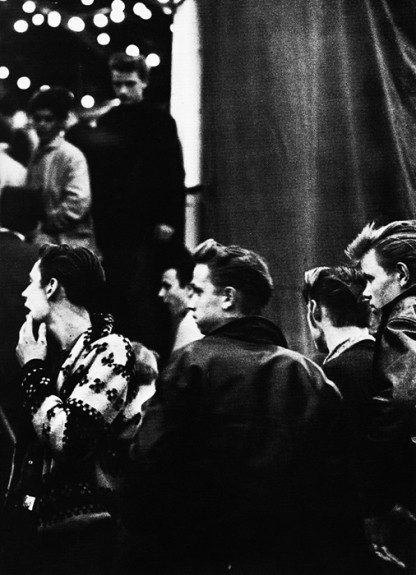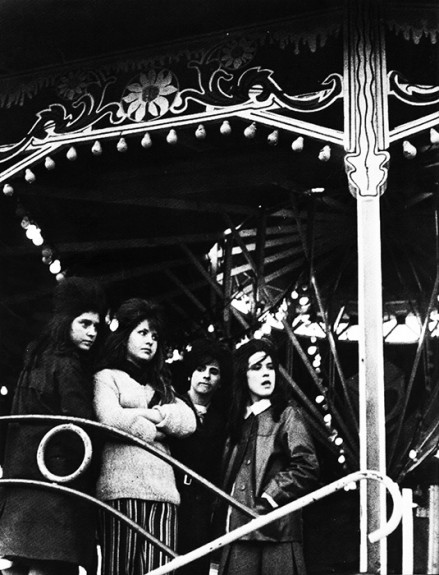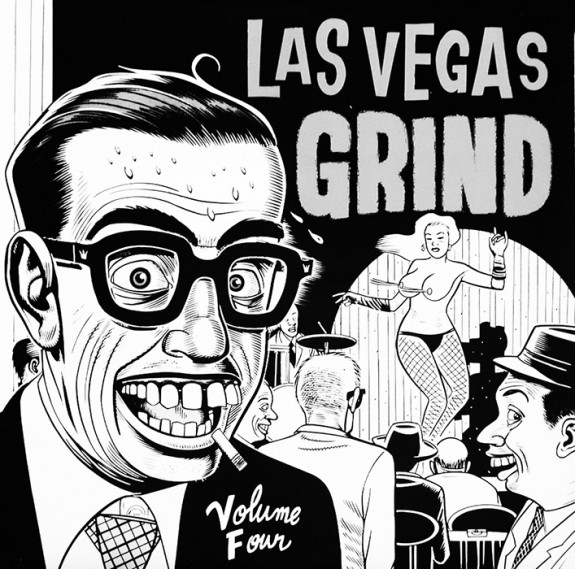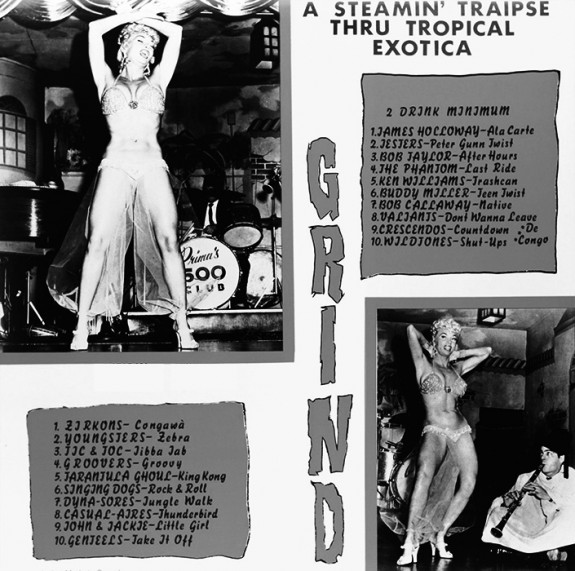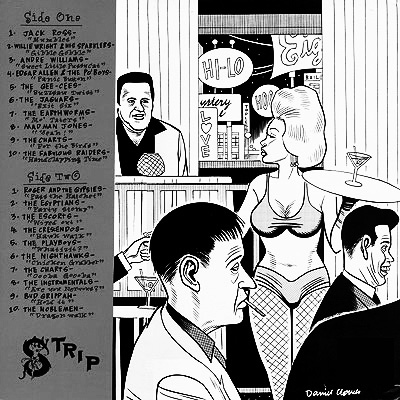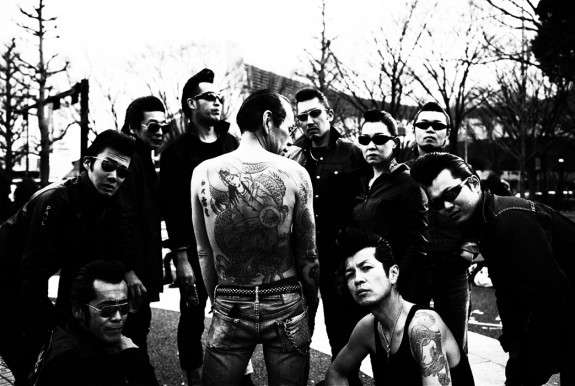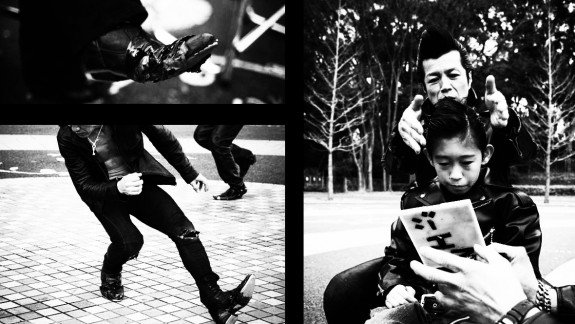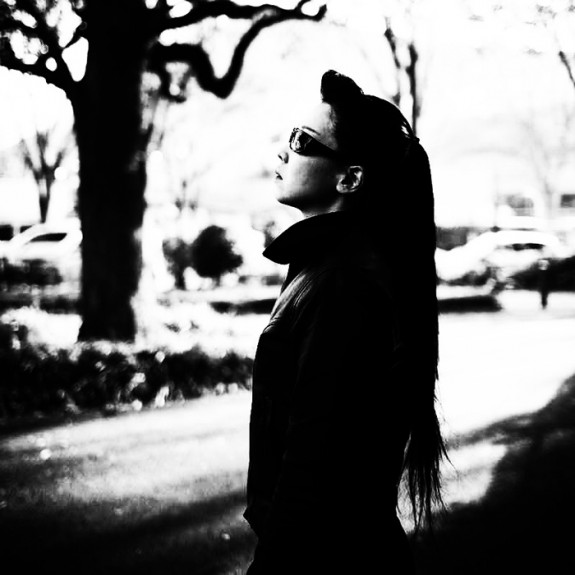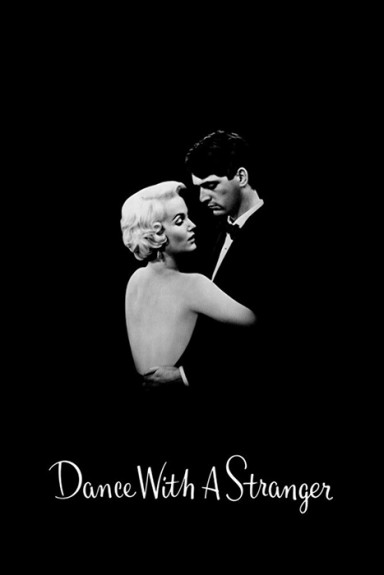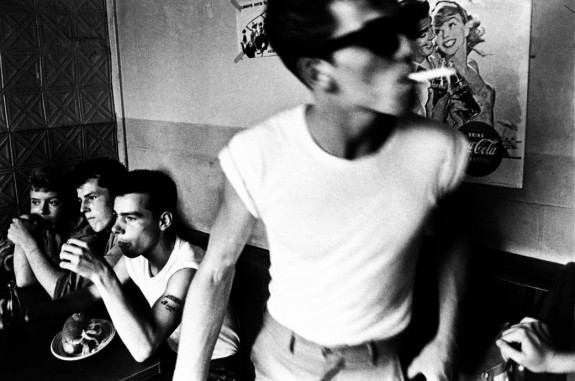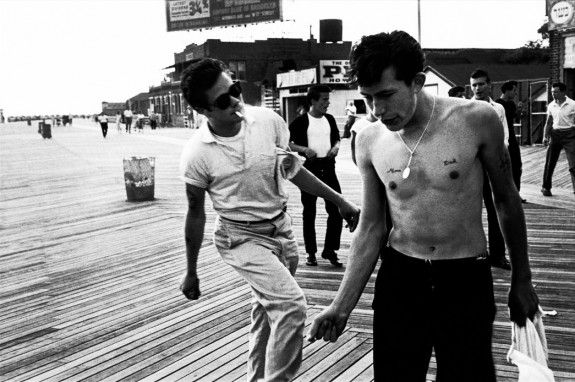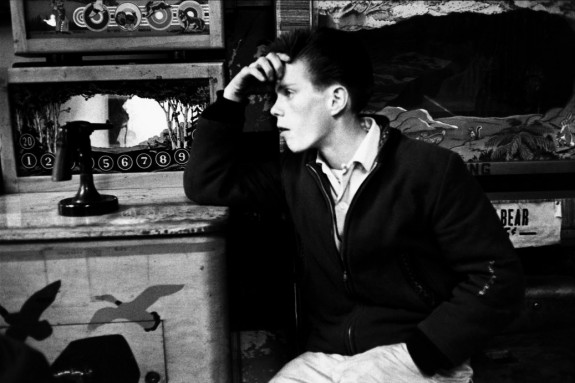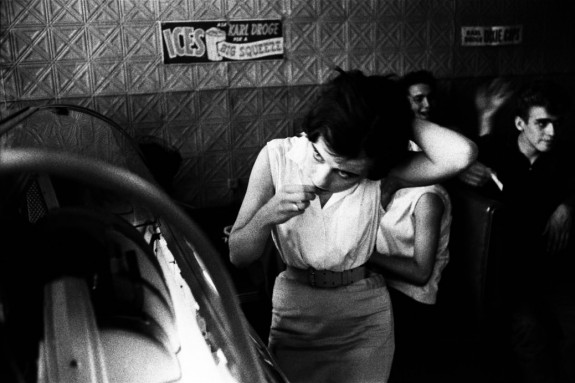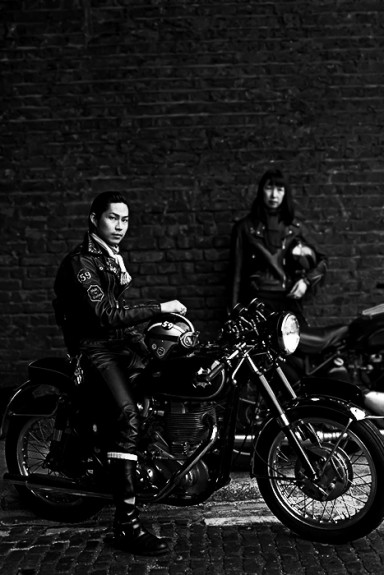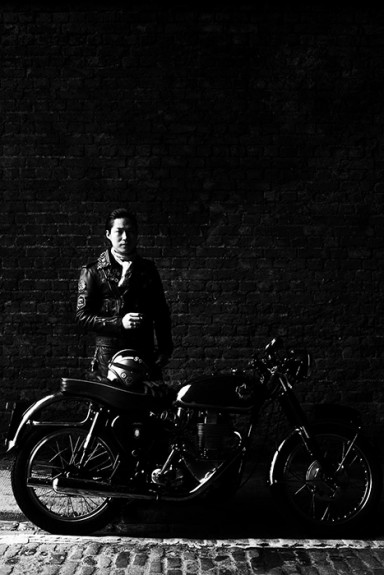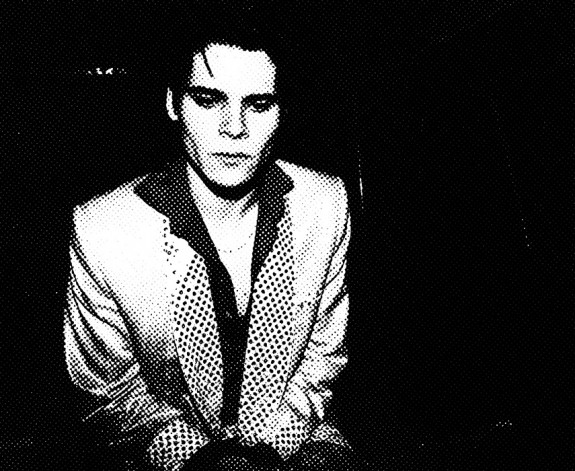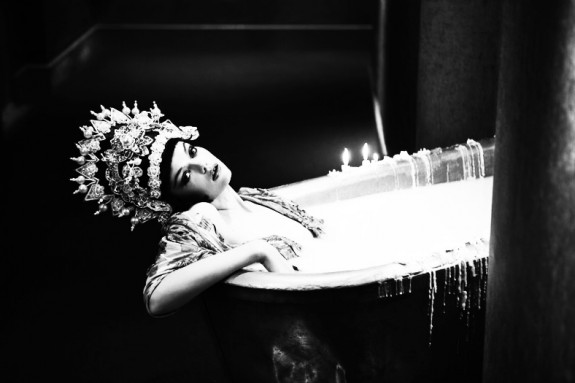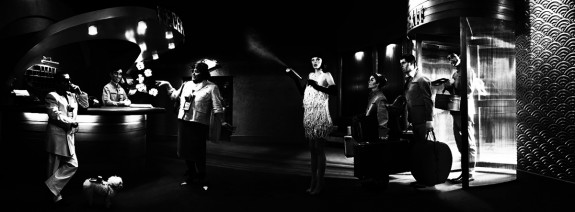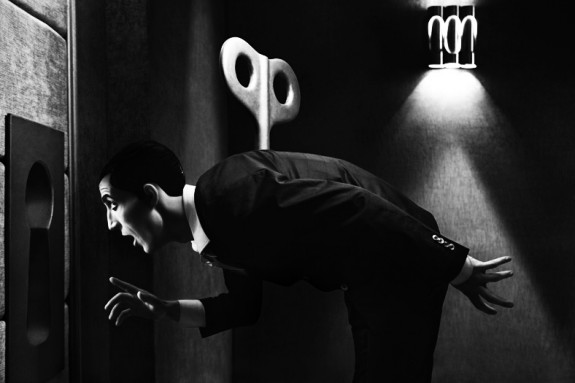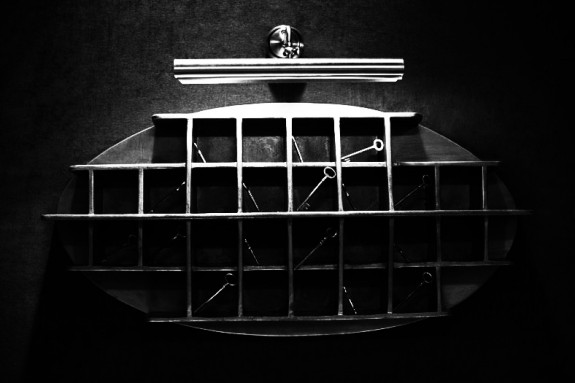Trails and Influences
-
Jurgen Vollmer’s Rockers and kitchen sink rock’n’roll
 The people/photographs in Jurgen Vollmer’s Rockers book (also released as Rock’n’Roll Times) could well be one of the original sources that Karlheinz Weinberger’s rock’n’roll took and reimagined into their own image of such things.
The people/photographs in Jurgen Vollmer’s Rockers book (also released as Rock’n’Roll Times) could well be one of the original sources that Karlheinz Weinberger’s rock’n’roll took and reimagined into their own image of such things.Vollmer’s photographs from the late 1950s/early 1960s (?) document young teenagers, rock’n’roll and early Beatle’s fans; their style being a subtle version of what we now think of as 1950s rock’n’roll / rockabilly, post the first swell of such things but pre the move towards a more 1960s, mod or Swinging London style.
I’ve lived with these photographs for a long time without realising it; they were used on the cover of The Smiths album The World Won’t Listen, which I bought many years ago when it very first wandered out into the world.
At the time I don’t think I really understood them. My cultural antennae were not necessarily yet well tuned towards recognising period detail and I think I may have thought they were just photographs of some young chaps on the cover and some young gals at the fair on the back.
 Looking at the photographs more recently I think they made more sense; the subtle turn of the decade rock’n’roll style is a somewhat Morrissey-esque, low key, kitchen sink friendly take on such things.
Looking at the photographs more recently I think they made more sense; the subtle turn of the decade rock’n’roll style is a somewhat Morrissey-esque, low key, kitchen sink friendly take on such things.More a once-Manchester-Northern-England-like cup of tea version of such things than the exotic, otherly flamboyance of say Elvis or Little Richard.
I’ve seen a few different versions of this book, some of which can be perused below:
Rock’n’Roll Times, Rock ‘N’ Roll Times: The Style and Spirit of the Early Beatles and Their First Fans
continue readingand Rockers.
-
Las Vegas Grind and the days before quite such blatant commodification…
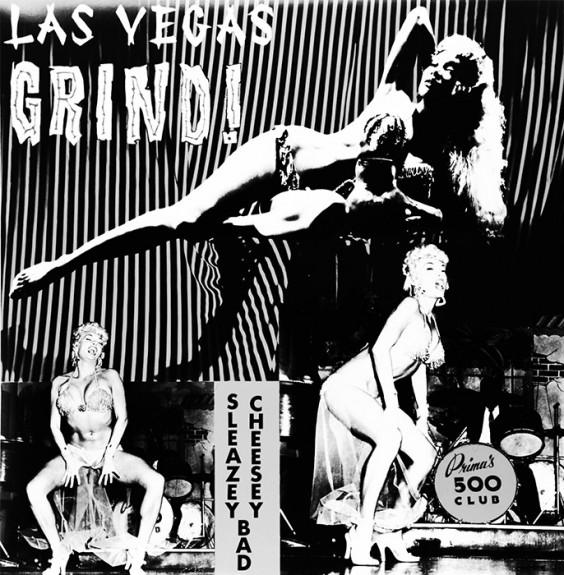 Now, if you’re of a younger age than my good self, it’s probably hard to imagine what the cultural landscape was like the best part of twenty years ago, particularly in regards to what has come to be known as vintage, retro and burlesque and a world where department stores sell hair dye called burlesque red (they’re selling hippie wigs in Woolworths)…
Now, if you’re of a younger age than my good self, it’s probably hard to imagine what the cultural landscape was like the best part of twenty years ago, particularly in regards to what has come to be known as vintage, retro and burlesque and a world where department stores sell hair dye called burlesque red (they’re selling hippie wigs in Woolworths)…Aside from say the more traditional side of rockabilly, there was tumble weed out there compared with modern times.
Some of my favourite clubs for such things were often just once a month, there may well be 20 or 50 people there (but those that were, really were there)… and finding music, books and other related culture was a constant good old trawl through a scattered selection of shops, charity shops and stalls (and that’s even if you were living somewhere like central London).
Anyway, back in those days of late night Soho shennanigans, one particular beacon were the Las Vegas Grind albums. Just the covers were enough, without having to spin the discs themselves… but if you did, well, you might well be transported to a foreign land. To quote this gent, this was music “from the garages and wiggler bars from across America”, music that “swings, howls and growls”.
Willie Wright & His Sparklers, Andre Williams, The Playboys, Mo’ Taters, Oooba Goooba and in particular Genteels Take It Off… what more could you need?
Well, how about artwork from the pens and pencils of that fine capturer of vintage American desparation, sweat and faded dreams Mr Daniel Clowes?
Or indeed covers draped with back-in-the-day burlesque bump’n’grind gal of some renown Lilli St Cyr?
Peruse the albums here and more of such things than you can shake a stick at via Crypt Records here.
Visit Mr Daniel Clowes here.
continue reading -
Tokyo Rockabilly Club and the archetypal, distilled spirit of rock’n’roll rebellion
If the people in Karlheinz Weinberger’s 1950s photographs could be said to have created their own version of rock’n’roll after having discovered their source material via an out of tune radio (see here at Afterhours)… well, the more contemporary Tokyo Rockabilly Club could be said to have taken their source material and refined, distilled and customised it into a black leather, foot high quiff archetypal image of sharp rock’n’roll rebellion.
A reimagining, not a recreation indeed.
Perhaps if the Elvis 68 Comeback Special fell through a portal to become mixed with The Cramps Creature From The Black Leather Lagoon, a touch of the spirit of Mr Weinberger’s subjects and some of the attention to detail that can be found amongst the 21st Century Rockers who can be found in Horst Friedrich’s book were mixed, matched and dallianced with one another – well, maybe you wouldn’t be too far away from the image of rockabilly that they have created.
It is an exceedingly photogenic subculture and style and not unexpectedly they have been photographed by a fair few shutterbuggers – almost making it into book form via the work of Paul Mueller-Rode and recently the Quarterly photography magazine featured images of and interview with the club by Noriko Takasugi (the images here are from that article).
One of the things that’s interesting about the members of the club is their age; involvement in subcultures is easier or more often found in those who are young in years. The people interviewed in Noriko Takasugi’s feature are keeping the flames alive at variously 51,41, 53, 48, 37…
More photographs, background and history can also be found at the cornucopic MESSYNESSYchic.
continue reading -
Dance With A Stranger and late night dissolution…
 It’s curious the things that stay with you over the years – for a fair few years now I’ve been slowly sending the shelves and shelves of books, records, magazines and the like that I’ve amassed over the years (at the same, it seems, slowly filling up the self-same shelves with more books, records, magazines and the like)…
It’s curious the things that stay with you over the years – for a fair few years now I’ve been slowly sending the shelves and shelves of books, records, magazines and the like that I’ve amassed over the years (at the same, it seems, slowly filling up the self-same shelves with more books, records, magazines and the like)…Anyway, one thing that has survived those various clearings out is the vinyl version of the The Dance With A Stranger 1985 film soundtrack.
It’s a fine collection of songs – all pre-swinging, pre-cool London – She Wears Red Feathers, How Much Is That Doggy In The Window and a lead vocal by Ms Beehive Mari Wilson.
One of the things that makes it, is that it isn’t just a clean presentation of the songs but rather is interspersed extensively with dialogue from the film, which sets the scene, story and atmosphere and which have become as memorable as the music itself for me and help invoke the film itself.
Aside from and with utter respect for the sad, indeed tragic story of Ruth Ellis, for me the film was an early(ish) pointer towards what has become Afterhours Sleaze and Dignity – in particular the – unlicensed? – afterhour bar scenes (with a future Ms Christine Keeler, Joanne Whalley, as a barmaid no less)… all “set” hairdos, suits and late night dissolution.
Peruse the soundtrack here (for but a couple of your good English pounds at the time of writing) and the film here.
continue reading -
Bruce Davidson’s Brooklyn Gang and non-layering over time…
I remember seeing Bruce Davidson’s Brooklyn Gang book back when it was published – being drawn to the cover, the 1950s imagery and quiffs but something stopped me from buying it, despite at the time being somewhat taken by culture that in part drew from such times and style…
Now, on a recent wander through the work, I think I know in part what that something was.
As the years pass, previous era’s culture, imagery, photograpy and style can gain a romantic layering, come to represent or be reinterpreted as something other than the day-to-day life it once portrayed.
But with the passing of the years, Bruce Davidson’s photographs have remained what they were originally: there is a certain brooding style to those in the photographs but this is a somewhat gritty, documentary view of life amongst alienated youth.
I don’t know enough of the story to speak definitively but for me there is in part a desperation, a dead-end feeling to these photographs and the lives in them, even though they are often set amongst the symbols of fun, youth and frivolity such as tattoo parlours, fairgrounds, the seaside, smiling soft drink adverts, jukeboxes and coupling.
In a way they remind me of Tom Wood’s Looking For Love photography book of early to mid-1980s nightclub documentation of working life, love, coupling and escapes or possibly the subcultural snapshot that is Chris Steele-Perkins and Richard Smiths The Teds book…
However, Brooklyn Gang is different; there isn’t the same escapist, raucous sense of life and fun that can be found in Looking For Love and The Teds.
That is not to be dismissive of them at all. They’re fine images but not necessarily suitable source material for a young mind interested in the creation of imagined otherly worlds.
The book itself has become one of those photography books that you will need a pretty penny or two to own nowadays – printed once, now long out of print. You can peruse it here and visit its publishers Twin Palms here.
You can view an extensive selection of photographs from the book at Magnum Photos here and here. Background on them and comments by Bruce Davidson can also be found here.
continue reading -
Get Rich Quick; Peter Doyle and Antipodean hidden histories
 Now, I suspect this is a bit Western/Europe culturally centric of me but until quite recently I’d not ever really thought of Afterhours-esque culture and subculture in Australia back in the day.
Now, I suspect this is a bit Western/Europe culturally centric of me but until quite recently I’d not ever really thought of Afterhours-esque culture and subculture in Australia back in the day.Peter Doyle’s work is one of the things that has changed that, in particular his collections of photographs from the Sydney Police archives – City Of Shadows / Crooks Like Us and more recently his first fiction book Get Rich Quick.
It’s a book set in the early to later 1950s, just pre and during the explosion of rock and roll and concerns itself with a (curiously likeable considering he’s actually something of a toerag) chap called Billy Glasheen who is variously a dance organiser, scammer, bagman and tour manager for visiting rock’n’roll acts.
Along the way the book mixes fact and fiction and weaves in amongst the semi-hidden histories of Australia in a way that put me in mind of writing by Jake Arnott, Cathi Unsworth and maybe also Anthony Frewin in his London Blue or even a touch of David Peace (although a somewhat lighter/easier read than the last chaps fictions).
…one of the highlights of the book is the telling of Mr Glasheen’s “keeping the wheels greased” on the famous/infamous tour where Little Richard renounced rock’n’roll and looked towards god; it captures the excitement of a moment in time when everything began to change in the face of the old guard and the bodgies and widgies (sort of Australian slang at the time for male and female juvenile delinquents / Elvis-esque proto-rock’n’rollers / rockabillys / teenagers) music and style began to go mainstream.
Visit Crooks Like Us / City Of Shadows around these parts at
Day #34/365a.Visit the collection of photographs here and here. Peruse the books and Peter Doyle’s fiction work here.
continue reading -
Horst Friedrichs Or Glory: 21st Century Rockers and the custodians / carrying forwards of myths
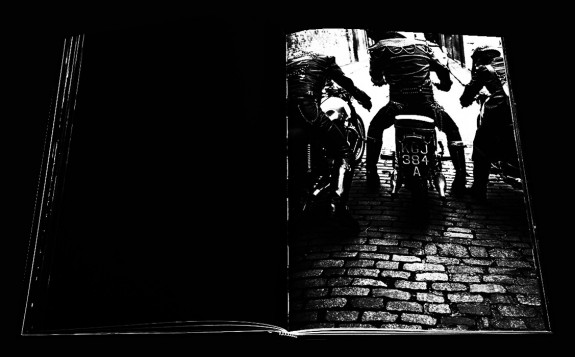
Horst Friedrichs Or Glory: 21st Century Rockers photography book focuses on a contemporary vintage inspired culture, one which although it arrives from a similar 1950s to early 1960s era as teds and rockabilly is possibly less well known, conspicuous or possibly easily/fully defined.The photographs I’m drawn to in particular are the ones where there is a grand, almost mythical take on the classic British biker/rocker; a distilling, refining and carrying forwards of ton-up boy, Ace Cafe style from back when.
They put me in mind of a Morrissey-esque imaginary landscape populated by the characters of the 1964 film The Leather Boys; a subculture that belongs more to the roadside cafe than the nightclub, more a cup of hot tea than a night on the tiles.
Although these are photographic portraits of the “real” world, they also remind me of Nick Clement’s work and his simulacra of other eras (see here at Afterhours or elswhere in the ether here); as in his photographs there is something very precise and considered about the style and the details – not a million miles removed in that sense from their subcultural folklore opposites, mods, in a way.
The Rockers clothing and style is often utilitarian in purpose or origin but this sits alongside a totemic use or value of it as signifiers of a particular mindset, lifestyle and sometimes group membership.
Though, rather than mod, the contemporary rocker style shown in Or Glory may be nearer to the Japanese word otaku and its association with obsessive interest and detail…
Along which lines, visit Horst Friedrichs at fellow re-creators and custodians of past motorcyle/rocker styles, Lewis Leathers here.
Visit Horst Friedrichs site here and the Or Glory book at its publishers Prestel here and elsewhere
here.
continue reading -
Mojo (1997) – a lost document of a lost Soho…
It’s a curious thing the 1997 film Mojo.
It was based on Jez Butterworth’s play of the same name – indeed he directed the film.
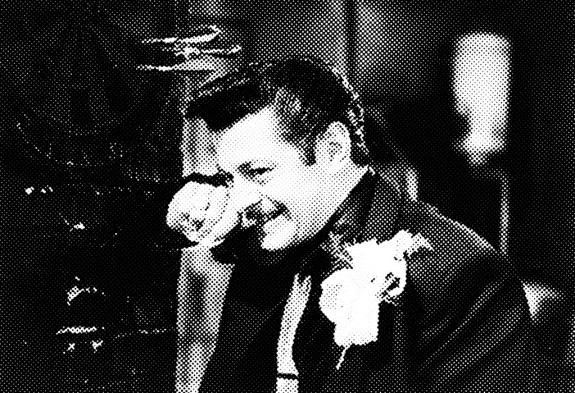 Set in 1950s Soho, all rival night club owners, coffee bar rock’n’roll discoveries and early Gallon Drunk-esque quiffery/brylcream (well, in intention at least – Aiden Gillen looks somewhat contemporaneous and out of place). All the elements are their and it’s something of a curio but if memory serves correctly it doesn’t quite gel and deliver that, well, Soho period glamour and grime in the requisite manner. Shame really.
Set in 1950s Soho, all rival night club owners, coffee bar rock’n’roll discoveries and early Gallon Drunk-esque quiffery/brylcream (well, in intention at least – Aiden Gillen looks somewhat contemporaneous and out of place). All the elements are their and it’s something of a curio but if memory serves correctly it doesn’t quite gel and deliver that, well, Soho period glamour and grime in the requisite manner. Shame really.I say if memory serves because I remember seeing it at the cinema when it came out and perusing the soundtrack around the same time…
…and since, apart from a TV showing it seems to have more or less disappeared from view and apart from a dubbed Italian video (renamed Soho) I don’t think it’s been sent out into the world on shiny discs and the like.
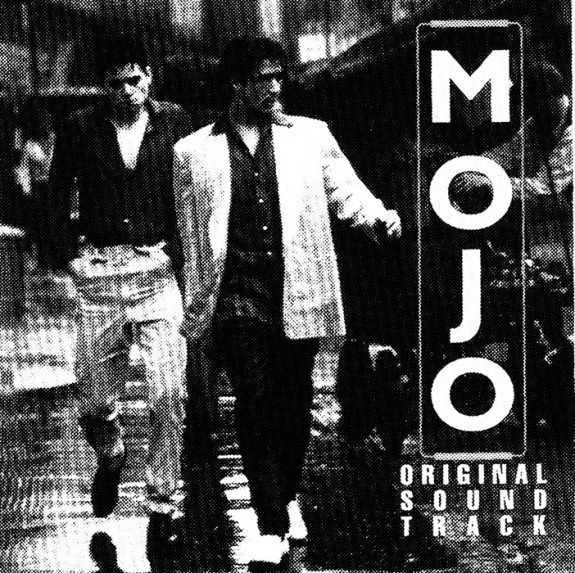 And talking of the soundtrack – it’s a curious thing. A mixture of indie pop of various shades (St Etienne, Warm Jets, Beth Houghton), sometimes Soho habitue Marc Almond, a touch of jazz, American mondo R&B (J.J. Jackson & The Jackaels – Ooh Ma Liddi), doowop-esque crooning from The Skyliners and most curiously for me a collaboration by Nick Cave & Gallon Drunk on the once upon a time Toni Fisher “smash hit” The Big Hurt.
And talking of the soundtrack – it’s a curious thing. A mixture of indie pop of various shades (St Etienne, Warm Jets, Beth Houghton), sometimes Soho habitue Marc Almond, a touch of jazz, American mondo R&B (J.J. Jackson & The Jackaels – Ooh Ma Liddi), doowop-esque crooning from The Skyliners and most curiously for me a collaboration by Nick Cave & Gallon Drunk on the once upon a time Toni Fisher “smash hit” The Big Hurt.Although Gallon Drunk in various ways and forms have crossed paths with Nick Cave & The Bad Seeds (sharing a stage, James Johnston playing with the band at various points, Terry Edwards playing on Where The Wild Roses Grow and so on), I think this is the only time that the two conjoined in such a way and so the soundtrack has tended to stick in the old mind.
The Big Hurt original here. Mr Cave and Messrs Johnston etc here. The (redubbed?) trailer. A few traces in the ether: Portobello Pictures.
Peruse the soundtrack here.
continue reading -
Drink Me, Eat Me: The seduction and wish to flee of Eugenio Recuenco’s never-never land…
If David Lachapelle’s best known work is a kind of beyond real reimagining of the here and now, Eugenio Recuenco’s is its parallel world brethren from a never-never land that belongs to a previous time that you can’t quite define…
I could well draw a line of connections between David Lachapelle’s, Eugenio Recuenco’s and Erwin Olaf’s work – they share some aesthetic and positional similarities; all exist in an imaginary world and land that mixes/draws from commercial fashion photography, high-end almost Hollywood-esque production values, fine art photography that moves away from the more gritty, social realist, documentary side of such things.
It’s this sequence in particular that I love of Eugenio Recuenco’s work; set in some imaginary hotel from a not quite definable past (1920s-1930s-meets a touch of 1970s glamour-esque?) and creates a world where Vanessa Paradis’ other world sister has booked a room in this plush, velvet, Disney-gone-rather-dark fantasy; all clockwork villains, wax like staff, keyhole peepers and bath time on the roof accompanied by your very own jazz trio…
…dreamlike, seductive and somewhere that makes me both want to visit and escape – as may well do all good fairy tales.
(Looking at the work again I can see a touch of the previous era decadence, style and glamour of Biba, maybe a smidgeon of Blue Velvet/last episode of Twin Peaks era David Lynch and talking of fairy tales, Alice’s adventures down the well and through the looking-glass.)
If you have the pennies, there is a rather fine and grand 300 page collection of his work called Revue. Visit that at its publisher teNeues Verlag here and peruse it here.
Visit Eugenio Recuenco’s site here and photographs from this particular sequence here.
continue reading -
The Spy Who Came In From The Cold and the converse glamour of a dash or more of seediness…
“They’re just a bunch of seedy, squalid bastards like me. Little men, drunkards, queers, henpecked husbands… civil servants playing cowboys and Indians to brighten their rotten little lives…” Richard Burton in The Spy Who Came In From The Cold / England Sandwich by Earl Brutus.
Although the film was released in 1965, this laserdisc cover to The Spy Who Came In From The Cold seems as though it could well belong to – or at least be a precursor of – Richard Burton’s work in the 1970s such as Villain, when he could lend his roles an air of bitter, corrupt, seediness (and indeed where the films themselves seem heavy with an air of such things).
Although more overtly bitter, in a way his work at this time reminds me of Robert Mitchum in the 1970s in The Friends Of Eddie Coyle (and possibly The Big Sleep – see Day #10/365a / Farewell My Lovely – see Day #3/365a) – the same sense of tiredness, of world weariness, of a man who knows somewhere deep down that his fingerholds are nolonger there…
Which brings me back to seediness, the converse/curious glamour it can have and this quote:
“Seediness has a very deep appeal… It seems to satisfy, temporarily, the sense of nostalgia for something lost; it seems to represent a stage further back…” Graham Greene, Journey Without Maps – stumbled upon I expect via the writing of Retromania author Simon Reynolds.
Peruse the current day sending forth of the film here.
continue reading
